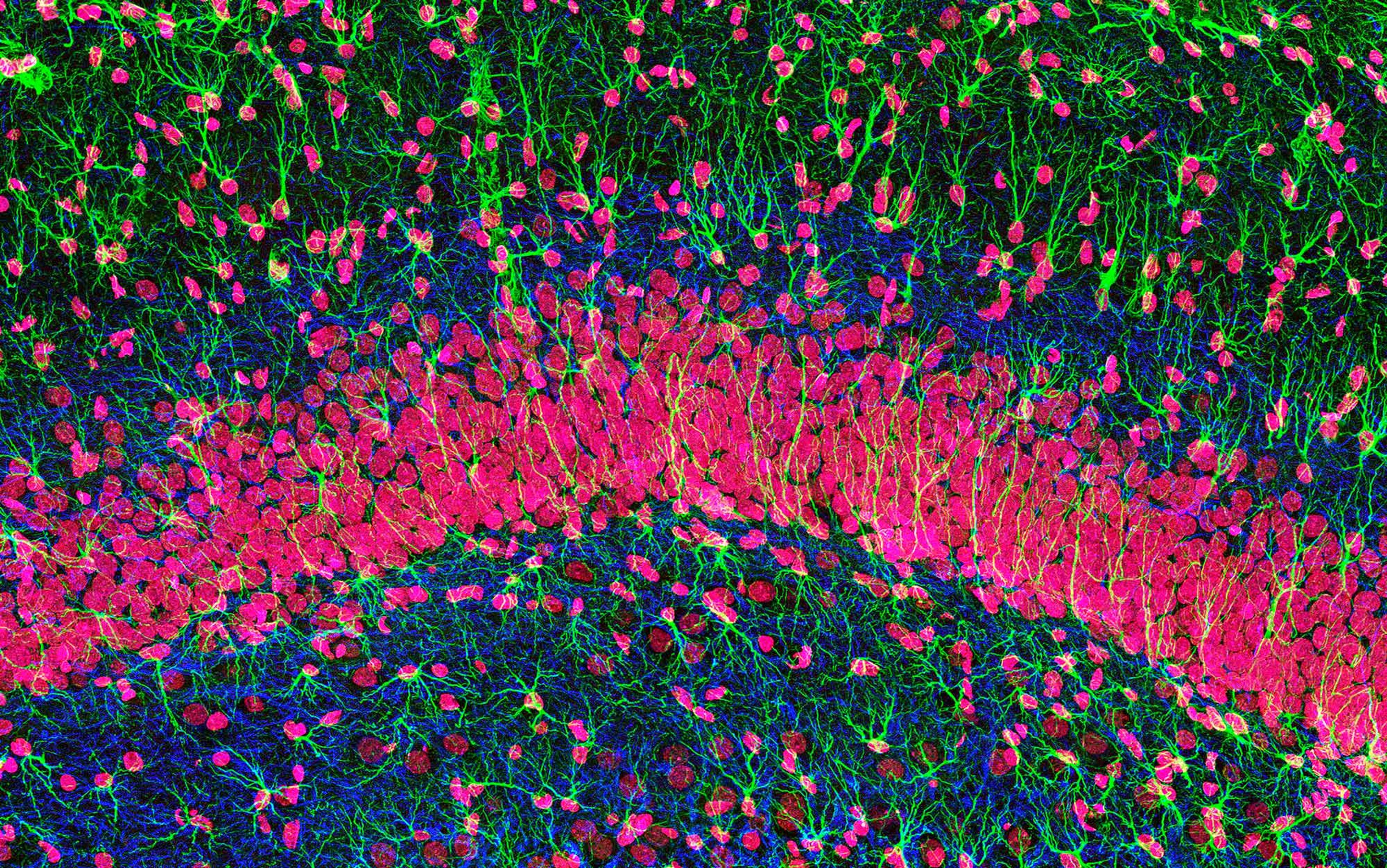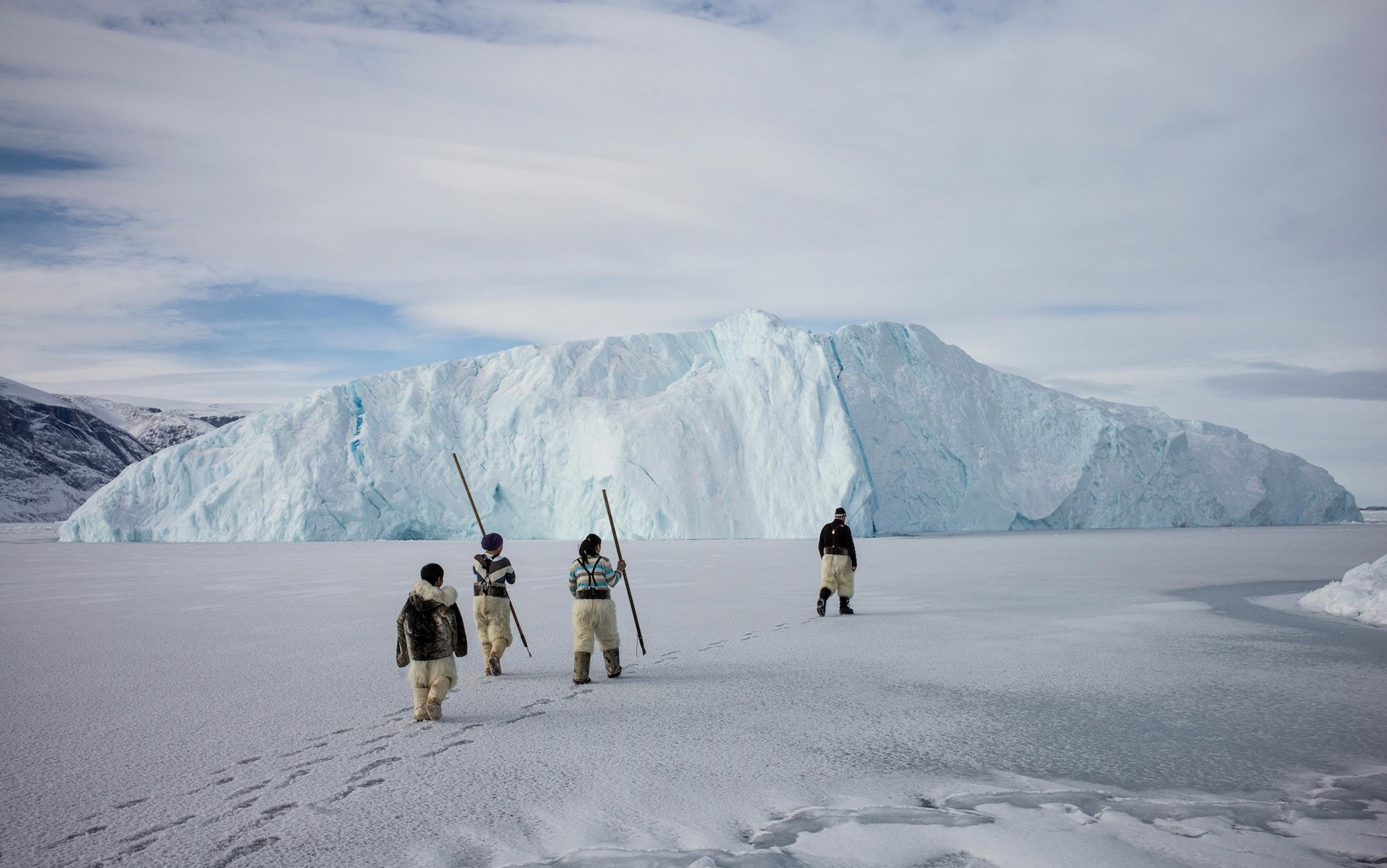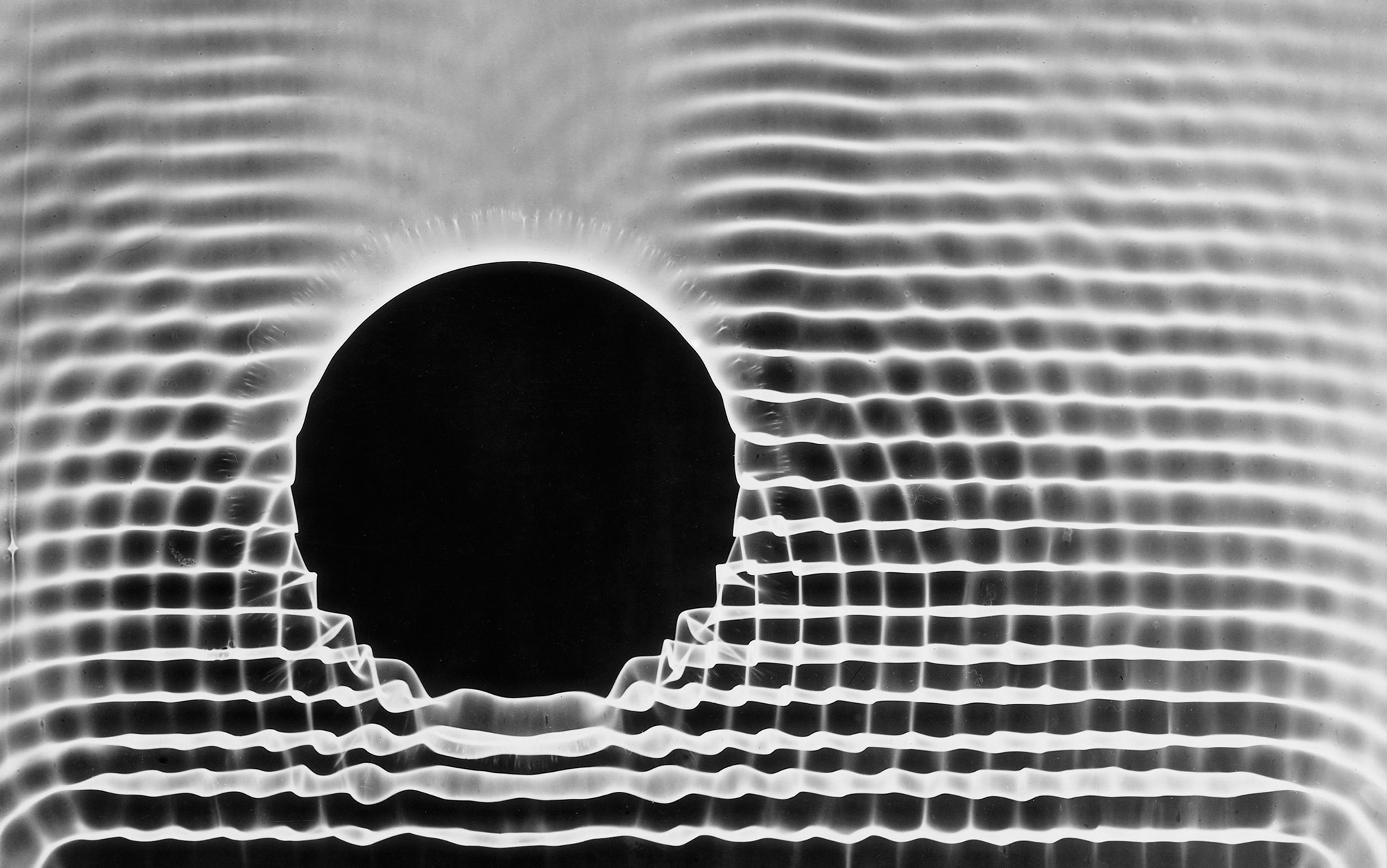Navigating to unfamiliar destinations is often a matter of consulting a digital map of the planetary surface. Once accessed, it literally tells us every turn we need to take to get to our destination.
‘You have arrived.’
Thanks, Google.
However, without any map – digital or paper – navigation is often an unsettling, time-consuming challenge. Sometimes, it’s even a nightmare, and innumerable lives have been lost when navigation failed. The British explorer John Franklin set out with 129 men in 1845 to find and map the fabled Northwest passage – a seaway to Asia originally sought by Columbus in 1492 – but the expedition never returned. Instead, they spent three years stuck on Arctic ice before resorting to cannibalism and perishing.
Yet some navigators seem to have a special sense. Wayfinders such as Nainoa Thompson in Hawai’i, who has dedicated his life to the study of the ancient Polynesian art of seafaring, say that they can navigate long distances unaided. How is that done? Thompson recalls a life-or-death situation on a voyage by canoe from Hawai’i to Tahiti in 1980 – a journey of more than 2,600 miles that he and his team undertook without the aid of any navigational instruments. Around the halfway point, sleep-deprived and lost in a remote, desolate area known as the ‘doldrums’, a region near the equator known for being featureless, Thompson says he could somehow ‘feel’ the direction of the Moon, his only point of reference: ‘There was something, a mechanism, that allowed me to understand where the direction was, without seeing it,’ he told an interviewer. ‘[W]hen I just gave up fighting to try to find something with my eyes … I felt this warmth come over me, and all of a sudden, I knew where the Moon was.’ Eventually, there was a break in the clouds, and the Moon was exactly where he felt it to be. Nonetheless, the ‘deep connection’ he experienced remains a mystery. Could he unconsciously sense where the Moon is? Was he guided by some mysterious force?
For the bulk of our evolution, before we could be considered ‘human’, our navigational abilities relied on using our sense organs. We take it for granted that we can see our way with our eyes. But we also have other senses that we can use to orient ourselves – more than ‘six’ if we include the vestibular system, which underlies our ability to balance, and proprioception, our sense of bodily articulation and movement. Yet, we seem so unlike nonhuman animals, who tap a host of alternative senses to find their way: bees see ultraviolet light, sharks sense electrical patterns, and bats echolocate.
When no other sensory aid is available, some nonhuman animals can also guide themselves using Earth’s magnetic field. Our planet is an enormous magnet, an object whose internal electrical charge causes it to be positive at one end and negative at the other. This means that Earth – like other, smaller magnets – can physically align a compass needle towards its North and South poles, a property known as polarity. The pull of a magnet is represented, in textbooks, by lines of force that predict where, precisely, the needle will point. But it’s nuanced: the force lines shift with what scientists call ‘inclination’ and ‘declination’, pointing towards Earth with increasing or decreasing angles to the horizontal plane, depending on how far or near the observer is to each pole. Arguably, these properties offer far superior navigational cues relative to your smartphone, which can break, malfunction or, ironically, become lost.
Perhaps our distant evolutionary ancestors, millions of years in the past, also had an innate navigational ability that exploited magnetic field lines. This would be extremely useful, offering advantages not only in barren environments, but when exploring new territories to find resources for survival. Even Charles Darwin added his two cents on these topics, claiming that ‘some part of the brain is specialised for the function of direction’. If such a mechanism did exist in our ancestors, could it have been muted – phased out with the advancement of consciousness and communication, the onset of civilisation, the invention of artificial means such as the compass and, ultimately, technologies such as GPS?
Among other species, there are incredible navigational feats that seem to defy reality unless we invoke the existence of a magnetic sense. For instance, the Arctic terns I see outside my window during summer in the high Arctic of Norway have just returned from feeding grounds on the other side of the planet, in Antarctica. Bar-tailed godwits, their avian neighbours at a nearby lake, can fly 6,000 miles to New Zealand – a minuscule target in the context of such great distances. But perhaps the most well-known example is the homing pigeon: with their uncanny ability to fly home, pigeons have dutifully delivered post, medication, contraband and intelligence across distances that span hundreds of miles, from locations they’ve never visited before.
The mystery of magnetic navigation was dismissed until the 1950s, when the German zoologist Friedrich Merkel and his student Hans Fromme observed that when caged robins hopped and flew during migration season, they always oriented themselves in a southerly direction. Along with Wolfgang Wiltschko, another German zoologist, Merkel showed the migratory direction in which robins pointed themselves could be controlled by carefully changing the direction of the magnetic field surrounding their cages. The scientists thought that the birds must be using Earth’s magnetic force. Yet, with no explanation of how exactly a magnetic sense could actually work or how, anatomically, it could be possible, the scientific community balked.
Wiltschko and his wife Roswitha finally achieved a convincing study in 1972. They caught 27 wild robins and waited, in some cases months, to run the tests during the spring migration season. Using an indoor cage in a windowless room with a strict light/dark schedule, surrounded by carefully calibrated electromagnetic coils, they were able to manipulate the strength of a magnetic field surrounding the cage so that it would equal Earth’s, while separately altering both its North-South polarity and its inclination angle towards the ground. Eight perches were set up for the birds, spaced equally around the cage’s perimeter. Any time a bird landed on one, that landing was registered electronically by a weight-triggered switch, and recorded by computer.
Initially, they found that, when the experimental setup matched Earth’s magnetic polarity and inclination, the robins showed a strong tendency to perch around the northern perimeter of the cage; their movements were oriented towards the magnetic North. When they reversed the arrangement of the field, the birds accordingly reversed their direction, perching at the south end of the cage. Then, when they switched the polarity back to North but eliminated the inclination of the field lines, so that they were no longer pointed towards or away from Earth’s surface, the robins perched in random locations. In this case, a compass would still point North because the polarity component remained, but the birds lost all sense of direction. That left magnetoreception, especially perception of the degree of inclination, as the only remaining explanation.
These findings set the stage for new experiments that, over time, show that flies, honeybees, ants and termites, snails, newts, various fish, frogs, sea turtles, lobsters, pigeons, mice, bats, mole rats, foxes, cattle and deer all have a magnetosense.
The magnetic sense is so evolutionarily early, it could have evolved in any plant or animal living today
However, despite 50-plus years of growing evidence for magnetoreception, there has been an equally growing elephant in the corner. No known sense organ, such as an eye or ear, has ever been found.
One lead comes from magnetoreceptive microorganisms: the magnetotactic bacteria. Salvatore Bellini at the University of Pavia in Italy was examining bog water for pathogens. Serendipitously, he discovered a strange form of bacteria under his microscope that mysteriously swam northward, all at the same time. He then set out to determine if they were using Earth’s magnetic field to orient themselves. In 1963, he reported that, to his surprise, he could override this natural direction of movement with artificial magnets.
The finding remained obscure until 1975, when Richard Blakemore at the Woods Hole Oceanographic Institution in Massachusetts made the same discovery using similar techniques. The phenomenon, he said, aided these organisms in their search for food in the mud. Blakemore determined that the bacteria’s movement was driven by magnetite, a magnetic iron ore normally found only in cold, lifeless rock, basically unheard of in the realm of biology. The discovery is profound because, in evolutionary terms, bacteria predate eukaryotic cells with DNA structured in chromosomes inside a nucleus. This suggests that the magnetic sense is so evolutionarily early, it could have evolved in any plant or animal living today.
By 1979, this discovery caught the attention of James Gould, a biologist at Princeton University, and Joe Kirschvink, then a postdoc with a background in geology. Gould and his colleagues had already gained notoriety for discovering magnetite in bees and pigeons. Now, with Kirschvink’s geology background, they were poised to determine if magnetite could somehow be part of a magnetoreceptive mechanism in both these species. They examined the mineral content of pulverised bees and pigeon heads using specially adapted geological testing equipment. In each, they discovered about 100 million particles of magnetite. This opened the possibility that Earth’s magnetic force could somehow affect the nervous system by the raw movement of these millions of tiny compasses, perhaps facilitating neural communication to signal North and South.
To Kirschvink, the species to explore seemed obvious: humans. ‘We were looking into honeybees and homing pigeons, and I said: “Oh shit! There’s magnetite everywhere. What about human tissue?”’ He called the local medical school for any autopsy material he could use. A surgeon offered up an adrenal gland and, using palaeomagnetic equipment built to study the effects of Earth’s magnetic field in rocks, Kirschvink found magnetite there, too.
The search for human magnetoreception was on. It was spearheaded in the late 1970s by Robin Baker, then a young British zoologist at the University of Manchester, who told me he was ‘fascinated by the idea of carrying out navigation experiments on people as if they were pigeons’. His early investigations, now known as the ‘Manchester experiments’, involved taking vanloads of blindfolded students on road trips along different winding routes deep into the Cheshire countryside, c50km away from campus. It was expected they would point randomly in any direction while blindfolded, and show improved accuracy once their blindfolds were removed. For an initial set of 20 subjects, the data clearly showed exactly the opposite pattern – the blindfolded students were better at navigating, mysteriously demonstrating an eerily accurate sense of direction; 90 per cent of them pointed within 45 degrees of the true ‘home direction’. Impressively, the average of all their estimates was less than five degrees in error: if the target was midnight on a giant clock turned horizontal, and they were at its centre, that’s like pointing at 4.5 minutes after 12. With that many subjects being so consistent, the stats dictated the odds of this happening by chance were less than 1 per cent. So there appeared to be only two possible explanations for these surprising results: either human magnetoreception was irrefutable or something astronomically unlikely was happening, such as extrasensory perception. News of the results spread to national newspapers and television stations.
Baker was eager to show that his results had to originate from a magnetic sense. He recruited 31 new subjects, who were similarly blindfolded, driven away, and asked to point homeward. This time however, about half of them had a bar-magnet attached to their blindfold, intended to interfere with any existing magnetically based navigational sense. Their ability was to be compared with other subjects fitted with nonmagnetic brass bars of similar size and weight, as an experimental control. Remarkably, the results revealed that the magnet-wearing subjects could point only randomly, while those wearing nonmagnetic brass were again consistently accurate – averaging their results yielded an error within 10 degrees of the true direction.
‘Those first two experiments were so exciting, I thought I’d carry it on, and it became my life for the next 10 years,’ Baker told me. In his next step, the ‘walkabout experiments’, 37 subjects were led through a forest. This time, half the subjects wore magnets and the other half placebos. They were taken into a nearby woodland along the most twisted path that Baker and his colleague, Janice Mather, could guide them on for a half-kilometre. This time, they weren’t blindfolded, and could use the beams of sunlight streaking through the trees as their reference. Again, those without magnets were able to point homewards, while those with magnets were disoriented.
What disrupts navigational ability in birds might equally interfere with any form of human magnetic sense
This trifecta of supporting data took the idea of human magnetoreceptive ability from the fringes of occult discussion into evidence-based reality. Baker laid down his oft-cited claim that ‘Whatever the repercussions, we have no alternative but to take seriously the possibility that Man has a magnetic sense of direction.’ With this bold declaration, he waited for skeptics to attempt to replicate his results and see for themselves.
Perhaps the most notable work was undertaken by Gould and Kirschvink along with their colleague, the biologist Ken Able at the State University of New York. With others, they spent five years trying to replicate Baker’s findings. Just as Baker did, they blindfolded students, transporting them by bus to a series of unfamiliar locations around Princeton, and asked them to point to campus or to a given compass direction. In one study, some wore magnets, others placebos. They also tried to replicate Baker’s ‘chair experiment’, in which subjects were accurately able to point in a given direction after being spun around. But again, no dice. In the end, replication attempts involving hundreds of participants, at Cornell, Albany, Swarthmore, New Jersey, Tulsa, Keele, Durham, Sheffield and Melbourne all failed to replicate the findings.
Baker insisted that these experimenters failed to properly control for environmental factors, such as human-made disturbances in the magnetic field caused by anything ranging from power lines to electrical lab equipment, and for geomagnetic storms – fluctuations in Earth’s geomagnetic activity that cause auroral lights in the Arctic and Antarctic regions. He reasoned that such variations, known to disrupt navigational ability in birds with magnetoreception, might equally interfere with any form of human magnetic sense. Yet when these ideas were tested and geomagnetic disturbances controlled for, the results failed to provide anything new.
By 1987, Baker had delivered his last word on the matter, insisting that the accumulation of data over the years in each of these locations, when taken together and analysed statistically in grouped form, supported the existence of human magnetoreception. He has never returned to investigating it. He left academic life in 1996 and moved to Spain in 2002, eventually becoming a popular writer and broadcaster. With this departure, the field lay fallow for years.
But at least one investigator remained intrigued. ‘We had no evidence of fraud, no evidence of fudging the data. It looked, for intents and purposes, like a real effect. But we were unable to replicate it,’ Kirschvink explained to me by phone. Indeed, Baker had laid down a foundation for the discovery of human magnetoreception that, despite the many failed replication attempts, was too strong to be ignored. Kirschvink aimed to transcend the problems dogging Baker’s work with an entirely new, robust approach.
By 1992, as an emerging professor at Caltech, Kirschvink and his colleagues made the staggering discovery of magnetite in sample tissue taken from human brains. Next, he set out to probe living brains for any signals that could be linked with magnetoreception: if a human sensory system exists that can detect Earth’s magnetic field, it must involve measurable neural processing, in a manner similar to other well-studied senses. To achieve such measurement would require some method of controlling the magnetic field around subjects while, crucially, monitoring their brain activity. He and colleagues thought it possible to use electroencephalogram (EEG), a measure of electrical activity throughout the brain, recorded via electrodes on the scalp.
However, funding for such a contentious topic as human magnetoreception proved difficult to secure, and would take years. Only in 2014 were Kirschvink and a team of experts able to finance an experimental set-up with support from the Human Frontier Science Program and the US Defense Advanced Research Projects Agency (DARPA). The apparatus consists of an underground chamber just big enough for a single human. Within it are a series of coils through which the strength, polarity and inclination of magnetic field lines can be controlled. Any brain activity corresponding to field variations is measured using EEG. The chamber’s outer layer consists of a Faraday cage – a layer of aluminium to filter out any electromagnetic contamination caused by radio, computers, smartphones, elevators. ‘The addition of this shield is key,’ says Kirschvink, and it wasn’t until it was added that incoming data began to raise eyebrows.
‘If a signal comes in, this alpha-wave hum sharply drops. That was the huge discovery’
Indeed, lack of such a shield might have precluded attempts to replicate Baker’s results. During the years that Baker ran the Manchester experiments, AM radio broadcasts were common throughout the US, where replication attempts were most frequent, but nearly nonexistent in the UK. If humans, like pigeons, use a mechanism for magnetoreception that can be jammed by AM frequencies, it explains why so much time and effort put into replicating Baker’s finding ended in failure.
Kirschvink’s chamber, which gets around this core problem, was finally ready for testing at the end of 2014. When subjects enter it, they are simply required to sit still. The polarity and inclination components of the magnetic field are then reoriented according to a set of predesignated adjustments, executed in a random sequence, all while the EEG machine probes their brains for a response to a given change. The idea is that, when someone isn’t doing anything but resting, the brain’s activity level peaks and troughs rhythmically in waves at a specific frequency rate – in this case, within what is known as the ‘alpha frequency’ band. Then, if they hear, see or sense something, these cycles become less regular, marking a decrease in alpha activity.
Almost immediately, the initial data revealed drops in alpha frequencies that must have been tied to changes in the orientation of the magnetic field within the chamber. ‘Almost the first day we had it up and running, and we were looking at the EEG trace, it looked like the alpha waves were dropping,’ Kirschvink told me. ‘The alpha wave is the thing to look at in the brain – it’s the resting state. It monitors the senses. If a signal comes in, this alpha-wave hum sharply drops. That was the huge discovery.’ The magnetic field was the only signal the participants’ brains could be responding to – they were sensing it.
This new evidence for a human magnetosensory capacity implies that our early primate ancestors and even hunter-gatherers, our relatively more recent descendants, had access to magnetoreception because they needed it for survival. But if we had this mechanism so long ago, can we still use it or has it been phased out in antiquity? Kirschvink believes that if magnetosensory information is still in the brain, we should remain able to act upon it: ‘It would be astonishing if we lost the behavioural aspect and retained all the rest. We needed that system in the same way other animals use it.’
How a magnetoreceptive sense can affect us in the present remains a matter of speculation. It doesn’t seem to play any role in navigating because we are so accustomed to using other means – both biological (vision) and artificial (maps). Perhaps we need to be in a dire situation, lost at sea for example, to magnetically conjure the feeling of direction that wayfinder Thompson experienced when he saw the Moon.






